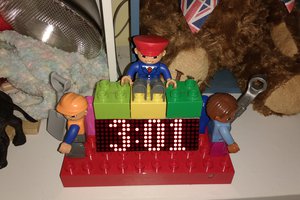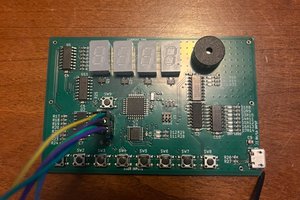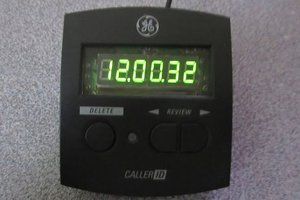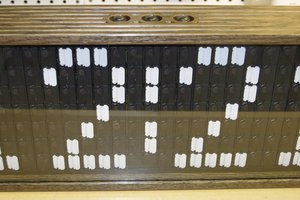This device displays how long it is until the next high or low tide and graphically shows the current water level using two electromechanical displays. It uses a WiFi connection to the internet to ask the noaa.gov tides and currents HTTPS GET REST api for the information it needs. You can select which tide station to use from a long list of them that NOAA maintains.
The upper display is the tide clock. It's made from a hacked quartz clock movement. The single hand points to the current time-to-next-tide.
The lower display shows the current water level. It uses a small stepper motor to raise and lower the level of the "sea" in an illustration of a seaside scene. Just because I could, I used StableDiffusion v2.1 to produce the illustration by giving it a text description of what I wanted and a photo of a similar scene for guidance.
You can talk to the firmware using serial over USB and a terminal emulator. It has a command interpreter you can use to change various runtime parameters such as the WiFi SSID and password to use and to tell it which tidal station to show the data for.
Once you've set the configuration, you can store it in non-volatile memory using the "save" command. Once saved, the configuration values are used whenever the power comes on or the device is reset.
The microprocessor, an Adafruit featheresp32-s2, supports a built-in LiPo battery that lets the clock continue to run when USB power goes away. To allow the clock to run for as long as possible, the water level display is paused when running on battery. When USB power is restored, it will once again display the correct water level. The tide clock continues to run when operating on battery.
See the github repo and setup instructions for more details.
 Dave Ehnebuske
Dave Ehnebuske




 Stefan Kratz
Stefan Kratz
 Zachary Murtishi
Zachary Murtishi
 K.C. Lee
K.C. Lee
The project ideas are superb i get more information from this .your work ideas are great and excellent .Thanks guys for sharing .